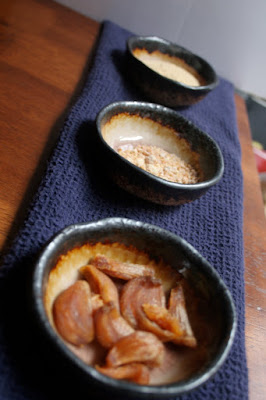Old and Busted v. New Hotness: Sous Vide Cookery
 | ** Old-Me has joined the chat room "SousVide:TheNewNotTooHotness" |
 | ** Future-Me has joined the chat room "SousVide:TheNewNotTooHotness" |
 | Hey... look who it is... Me... again. So glad that in the future the only person I talk to is myself. What the heck is Sous Vide? |
 | No time for shenanigans. You need to know this. Sous-vide, French for totally delicious, or possibly under vacuum. It is a cooking technique where food is vacuum sealed in plastic bags and "poached" in a temperature controlled water bath. Originally developed in the 70s as a way of reducing the loss of weight in foie gras during traditional cooking techniques, sous-vide has had widespread applications ranging from industrial food preparation to use in some of the most highly regarded restaurants in the world.There are several benefits for cooking with sous-vide: 1. Consistency. Sous-vide takes a lot of the guesswork out of knowing when a food is done cooking. Imagine a world where everytime you cook a steak it comes out exactly the way you want it, with zero chance of overcooking it. That world you are imagining... it's where I live. 2. Control. An egg is not made out of egg molecules. It is made up of a number of different compounds, including more than one protein. Since different proteins will denature at different temperatures, a chef can use sous-vide to prepare an egg with a unique texture. And a small change in cooking temperature, say a degree or two, can produce drastically different results. Sound delicious? |
 | No... it sounds like future-me doesn't have a girlfriend either... How does it work? |
 | By placing vacuum sealed food into temperature controlled water, one can bring up the internal temperature of food to the exact temperature of the water. The result will be an evenly cooked piece of whatever-it-is. By perfect, I mean, the edge of the product will be the exact same consistency as the center of it. |
 | Really? Vaccuum sealing? You actually own a vaccuum sealer? What on Earth for? |
 | Mainly, the absence of air speeds up heat transfer. Also, it prevents the bag from floating. Finally, I think it decreases the amount of moisture loss in the final product. |
 | Well, wait, if the food is cooked when the internal temperature of the food reaches the temperature of the water bath, why do some recipes require 36+ hours? |
 | Good catch! Glad you are paying attention. So, the concept of doneness is about raising the internal temperature to a given temperature. However, there is more to cooking than temperature. There are temperatures, that when maintained for an extended period of time, will break down certain fats. For example, collagen, which is found in less desirable cuts such as brisket or short rib, will dissolve into gelatin when it is heated to 55-60F for an extended period of time. In general, collagen is tough and bad, and gelatin is unctuous and delicious.Just be careful about what you put in the bag. It is going to be tempting to use wine to add some extra yumminess. |
 | Why can't I put wine or other alcohols into the SV bag? |
 | The reason you don't want to pour alcohol directly into a SV bag is that you will marinate your food in alcohol. The temperature isn't high enough to cook off the alcohol, and even if it could, there is no where for it to go. You can use alcohol marinades by cooking off the alcohol on the range and then cooling it down. |
 | Wait a second! Anaerobic environments at temperatures in the danger zone... this sounds like salmon in botulism sauce. How on earth is this safe? |
 | It isn't. Thomas Keller has secretly been attempting to kill his patrons for years using this technique. The truth is, there have been close to zero cases of botulism or food poisoning due to sous vide. That being said, there are definitely precautions you should take. For home chefs, you should really just cook and serve. There are also charts available that help you determine how long you should leave a given protein in the water bath to make sure it is cooked to the appropriate temperature. Generally speaking, you use the type of protein combined with its thickness to determine how long you would cook something for.For cook and hold situations, you will have to do a lot more research. |
 | Hrm, what about recipes that say to cook something for X period of time at Y temperature. For example, Wylie DuFresne has a 15 minute egg @ 70-C. |
 | Yah, so that is sorta cheating. What he is really doing is more like a traditional poach where the temperature of the water is higher than you ever expect the internal temperature of the egg will be. However, since the variables (the egg and the temperature of the water) are generally pretty consistent, the results will also be consistent.Finally, don't trust Wylie. When your back is turned, he will turn you into a powder and sprinkle you on top of a cube of molten lava tempura, which is neither molten, lava, tempura nor a cube. |
 | So, I've been googling while you have been answering these questions, and I found an article that contradicts you. Future-Me, explain yourself! |
 | I really hate that you use google to fact check yourself. But did these writer use the information superhighway to collect their information? Did they use the same bits of technology that brought you 2girls1cup to source their information? Of course, a lot of my information also comes from people who actively research this and also have a vested interest in NOT KILLING THEIR CUSTOMERS. |
 | What's 2girls1cup? |
 | ** Future-ME signed off. |



Comments
Post a Comment